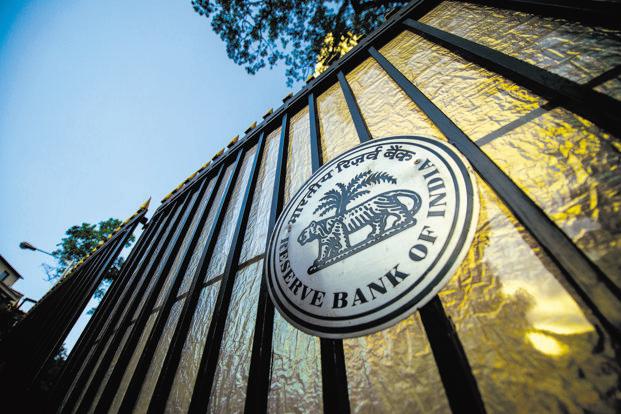Typically, in the last quarter of every financial year, commercial banks aggressively chase deposits and disburse loans to grow balance sheets and raise profitability. This time around, there is a shift in their focus—most banks are busy restructuring stressed loans or selling them to take advantage of the regulatory forbearance window that closes on 31 March. From April, there will not be any incentive for restructuring loans as the banks will have to set aside more money to make good the losses anticipated in future. Currently, if an account is restructured once, it is not classified as a bad asset and banks don’t need to set aside money unless it is a commercial real estate exposure. But from April, even if a loan is restructured once, it will be considered a bad loan and banks will have to set aside money which could be as much as 15% of the loan amount. Banks had restructured a cumulative Rs.3.67 trillion of loans until 30 September. By March end, many believe, the amount could rise to Rs.5 trillion.
Gross non-performing advances (NPAs) of Indian banks had risen to 4.5% of total advances in September from 4.1% in March and the net NPAs had increased to 2.5% in the first six months of the fiscal year from 2.2%. Along with restructured assets, stressed loans of the banking system crossed 10% of total loans in September. In the December quarter, the situation worsened with the gross NPAs of 40 listed banks rising by 8.93%—from Rs.2.69 trillion to Rs.2.93 trillion. Over the past one year, the growth in gross NPAs has been 20.46%, from Rs.2.43 trillion.
After setting aside money, the growth in net NPAs has been even higher. Net NPAs for the 40 listed banks have grown 22.82% on a year-on-year basis to Rs.1.70 trillion from Rs.1.39 trillion; on a quarter-on-quarter basis, it has grown 11.03% from Rs.1.53 trillion. The gravity of the situation becomes clear when one sees the growth in bad assets against the backdrop of growth in the loan books of banks. The total loan assets of the 40 listed banks in the December quarter has grown just about 2% and the year-on-year growth is around 9%. Clearly, Indian banks are not out of the woods as yet.
Let’s take a look at the big five in the public sector first. The State Bank of India (SBI) has managed to bring down its gross NPAs from 5.73% to 4.91% year-on-year; its net NPAs are down from 3.24% to 2.8%. In absolute terms too, SBI’s gross and net NPAs have come down year-on-year—from Rs.67,799 crore to Rs.61,991 crore and from Rs.37,167 crore to Rs.34,469 crore, respectively. But the happy story ends here as four big public sector banks—Punjab National Bank (PNB), Bank of Baroda (BoB), Bank of India (BoI) and Canara Bank—have grown their bad assets over the past year. PNB’s gross NPAs have grown by over 1 percentage point, from 4.96% to 5.97%, and net NPAs by an almost identical margin, from 2.8% to 3.82%. For BoB, the growth in gross NPAs has been by a little over half a percentage point (from 3.32% to 3.85%) and slightly less in net NPAs (from 1.88% to 2.11%). The quality of assets of Canara Bank too has slipped (from 2.79% to 3.35% gross NPAs and from 2.39% to 2.42% net NPAs). BoI is the worst hit of the lot—its gross NPAs have grown from 2.81% to 4.07% and net NPAs, from 1.75% to 2.5%.
Kolkata-based United Bank of India has more than 12% gross NPAs (12.03%) while 15 other banks have at least 5% NPAs. Of the lot, Indian Overseas Bank (IOB) has the highest gross NPAs (8.12%), followed by Dhanlaxmi Bank Ltd (7.37%), Bank of Maharashtra (6.65%) and Central Bank (6.2%). Of the 10 banks that have more than 5% and less than 6% gross NPAs, Andhra Bank tops the list (5.99%) and Punjab and Sind Bank is at the bottom (5.01%). Six banks have more than 4% gross NPAs (three of them are State Bank of India associates) and another six—including ICICI Bank Ltd—have more than 3% gross NPAs. At the bottom of the list are Yes Bank Ltd (0.42%), HDFC Bank Ltd (1%), IndusInd Bank Ltd (1.05%) and Axis Bank Ltd (1.34%).
When it comes to net NPAs, again United Bank tops the list (8.5%), followed by IOB (5.52%). Three banks (Bank of Maharashtra, Dhanlaxmi Bank and Uco Bank have more than 4% but less than 5% net NPAs; 12 banks have more than 3% but less than 4% net NPAs and 10 banks have more than 2% but less than 3%. Here too, the bottom four places are shared by Yes Bank (0.1%), HDFC Bank (0.3%), IndusInd Bank (0.32%) and Axis Bank (0.44%).
What is worrying is the fact that about three-fourth of the listed banks have shown a rise in both gross and net NPAs and in case of some of the banks, the rise has been pretty sharp. However, despite that, not every bank was forthcoming to set aside big money for fear of a drop in net profits. For instance, there has been only a 12.61% rise in BoI’s provision while PNB actually made close to 8% less provision. By virtue of this, PNB could manage a 2.54% rise in its net profit in the December quarter while BoI ended up showing over a 70% drop in net profit. In fact, had BoI decided to aggressively set aside money to pare its net NPAs, it would have ended up showing a loss. Only one bank has registered a loss on account of higher provisioning—IOB. Overall, 12 of the 40 listed banks have shown a decline in net profits. The trend may continue at least for a couple of quarters before the banks are able to turn the tide.



